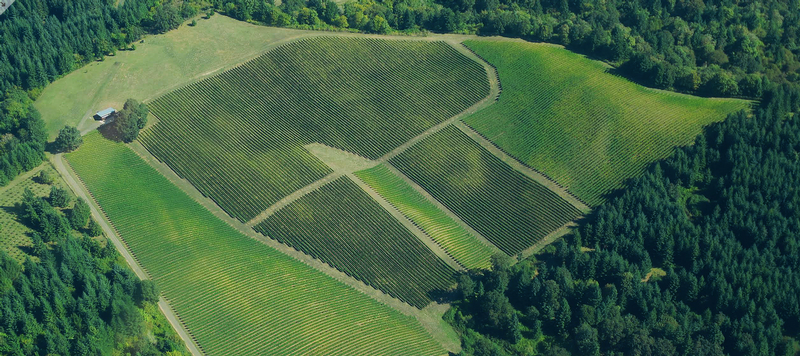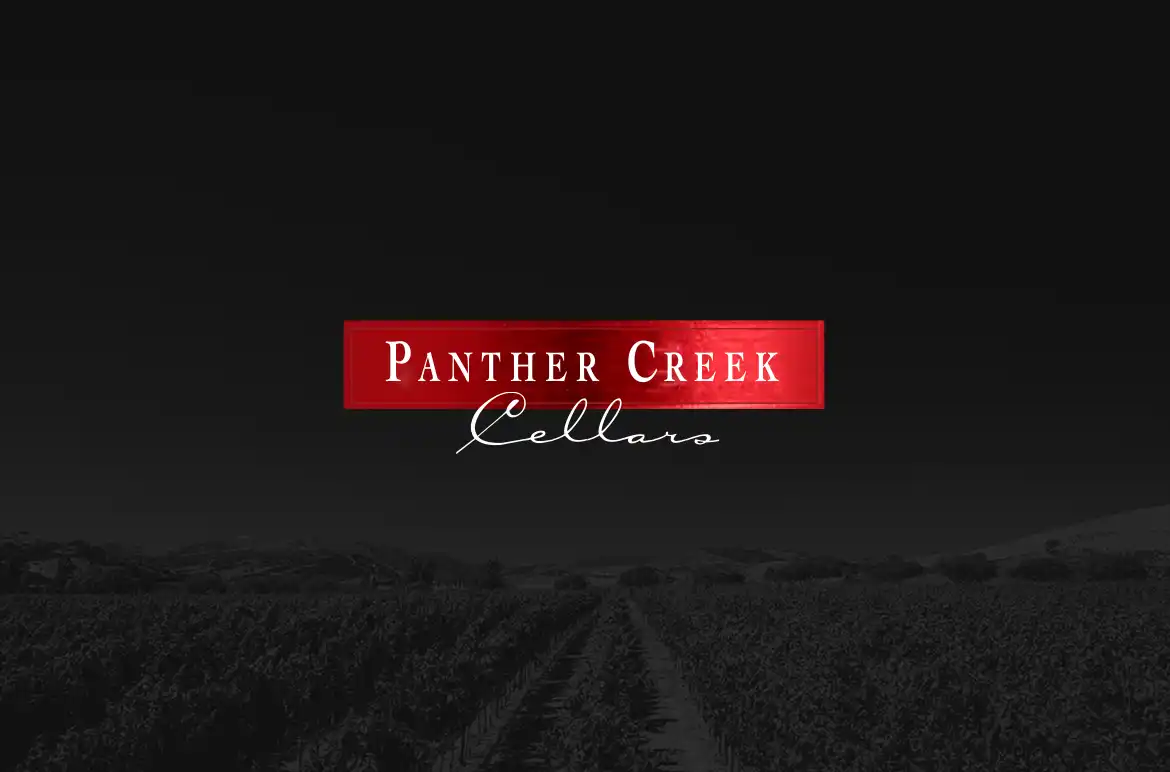West Coast Wine Country: Where the Sun Sets on the Best Vineyards

There is an endless list of reasons why someone would want to visit the West Coast. The Pacific Ocean, infinite mountains and valleys to drive through, multiple national parks, and the most consistent low humidity and high-temperature weather to be found anywhere in the United States, just to name a few.
But for travelers looking for a more luxurious and social activity, visiting the hundreds of wineries and vineyards for a taste of a few different West Coast wines must go straight to the top of the list. Along the West Coast, wine production in the states of Washington, Oregon, and California make up for 91% of all wine production in the United States, and for good reason, too.
For anyone looking for some West Coast wines to try, or at least an outdoor adventure that ends with a happy hour, we’d like to highlight how these three states that make up West Coast wine country stand out, and what you should look for on your next visit.
Washington Wine Country: Rivers & Mountains
Washington state is known for its rainy season, especially around the Seattle area. However, the best Washington wine regions to visit tend to be closer to the east side of the state, where the warm sun shines on fertile soil 200 days out of the year. The mid-state Cascade Mountains protect the Columbia Valley to the east from all the rain, and the Columbia River, and other large surrounding glacial rivers, keep the grapevines warm during the winter months and support the whole state's large farming industry.
Today throughout Washington's 43,000 vineyard acres there are more than 850 Washington wineries, growing more than 70 different types of grapes throughout its 14 AVAs.
The Climate
Despite that Washington is part of the West Coast collection of wine regions, the majority of Washington wines are grown inland, making the area a continental climate. Somewhere between 15,000 and 13,000 years ago, The Missoula Floods swept through the state of Washington, leaving behind the perfect environment for growing wines that benefit from hot summers, cold winters, and a significant amount of water to moderate the temperature. Today’s Missoula sediments that make up Washington wine country consist of windblown silt loam, fine sandy loam, and pure sand soils.
The irrigation system left behind by the floods is also the reason Washington has been able to cultivate such strong vineyards. While a lot of other wine regions are fighting droughts and struggling to find enough natural water to keep their vineyards alive, Washington wineries have so much water at their disposal they can easily regulate and control the size, weight, as well as many other factors of their wine production.
Top Wines
Washington wineries are masters of creating rich blends, especially with their red wines. Almost two-thirds of the state's wine production goes into growing red varietals, which contribute to the popular Bordeaux style blends that come from the region, consisting of various percentages of Cabernet, Malbec, Merlot, and Syrah.
Cabernet, however, is by far Washington’s most prized grape. New World Cabernets, as some know them, throughout Washington are diverse yet unique to a Cabernet’s signature style. The warm summers make for strong fruit flavors and the cool nights add to the grape’s natural acidity, and the environment is also known for growing particularly “polished” tannins that make for a long and smooth finish.
Oregon's Mountains & Valleys
Oregon wine country is only the fourth largest wine producer in the country, accounting for less than 2% of total U.S. wine production. However, across the more than 17,000 acres of land that make up Oregon’s five primary AVAs, nearly 74% of those acres are planted with Pinot Noir grapes. The state of Oregon sits on the same latitude as Burgundy, France, which is the OG producer of Pinot Noir, and also has the same cool climate. So while Oregon and France are on opposite sides of the world, this latitude location is what makes Pinot Noir from Oregon and Burgundy comparable to Pinot Noir from nowhere else in the world.
The Climate
Oregon’s climate, especially within the Willamette Valley, is a combination of continental soil, like the soil found in Washington, and maritime soil. Willamette Valley’s maritime soil comes from many years of volcanic activity that left a dusty earthiness behind to bring out the ripe fruit flavors Pinot is known for. Meanwhile, there is flooding from years of plate tectonic movement that gives the vines half a mile of water to pull from, and therefore the time it needs to reach its full flavor potential. For a grape-like Pinot Noir, that grows in tight clusters with a thin skin, this kind of nurturing environment allows the wine to take the time it needs to become perfect.
Top Wines
Oregon is, obviously, the capital of Pinot Noirs, but don’t forget that Pinot Noir is also the parent grape to many other popular varietals, like Pinot Grigio or Pinot Gris. So where you find Pinot Noir, you’ll likely find a nice option of Pinot Grigio.
And for those of you looking for something more unique, try our Chardonnay Pinot Noir White Blend.
California: Valleys & The Ocean
You can’t talk about wine without talking about California wine country. If the state of California was its own country, it would be the fourth-largest producer of wine in the world. The whole state produces almost 30% more wine than all of Australia and 90% of the wine produced within the United States.
What makes wine in California such a staple is the diverse climates throughout the state that are capable of producing delicious wines year-round. There are four wine regions, and from down up, they are the South Coast, Central Coast, Central Valley, and the North Coast. Just to give an idea of how massive the wine industry is in California, the two most well known California valleys, Napa and Sonoma Valley, are both located within just the North Coast region, and together hold almost 30 AVAs.
The Climate
California is a rare state that can grow wine in both Mediterranean and continental climates. Mediterranean climates, like you would find up in the North Coast, Napa, and Sonoma Valley, have long growing seasons and warm temperatures with little seasonal change. These vineyards in Northern California are similar to the Mediterranean climates found in popular wine regions like Italy and Western Australia, which are also on the west coasts of their continents. Because Mediterranean climates tend to have a consistent weather pattern and water supply, winemakers can pretty much grow any varietal they want and grow it however they like.
Continental climates, found in wineries located further inland like the ones mentioned in Washington, have much more diverse seasonal weather and depend on the land having a secure irrigation system to keep the grapes from freezing or drying out. California’s Central Valley continental vineyards, which range from Sacramento down to Fresno, benefit from the hot and flat 400 mile stretch of land that can farm grapes with a juicy ripeness at high yields. The Central Valley not only homes its own wineries, but is also a major supplier of grapes to other wineries throughout the state.
Top Wines
The diverse climates and soil throughout the state is what makes California #1 in U.S. wine production, and allows for so many different varietals to grow there. A few popular types worth mentioning are Pinot Noir, Cabernet, Syrah, and undoubtedly the queen bee of the bunch, Chardonnay.
Chardonnay is the most produced grape in The Golden State, and arguably the most popular. The flavors of this type of white grape are as diverse as the land where it grows, from bottles that have a full-bodied oaky vanilla flavor to the Chardonnay that taste more fruit-forward or buttery. Unlike Merlot or Pinot Noir that only grow well in certain regions, Chardonnay can more easily adapt to the environment where it is planted, thus it grows beautifully throughout California, with each region having their own unique style.
The West Coast is made up of the most beautiful landscapes in the entire country, and like many other beautiful places, it's even better when you look at what’s on the inside. Winemakers from around the world have moved to California, Washington, and Oregon because they know the climates can grow so many different delicious varietals. Like the Gold Rush of the 1850s that brought so many Americans to the west side, today we’re seeing something that looks more like a red and white rush, and it’s attracting vintners from everywhere who want to find their own gold in West Coast wines.

